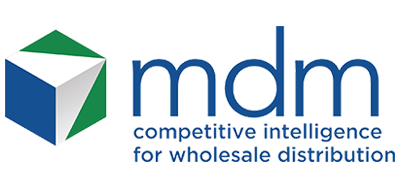In the wake of the pandemic, the world has rapidly changed and businesses are still reeling from these effects. Each industry has approached these shockwaves differently. For the distribution industry, the global economy presents challenges, but distributors are tackling these challenges with innovative strategies that are becoming trends — all of which involve adopting modern business management technology.
Supply Chain Disruptions
Supply chain issues began with the pandemic, and, though these problems persist, distributors are using inventory optimization to combat them.
Trend #1: The Growing Need for Inventory Optimization
During the pandemic, distributors shifted from just-in-time to just-in-case inventory management strategies, locking up their working capital in large numbers of inventory items. These companies are now working to optimize their inventory to free up capital and reduce overstocking expenses.
Optimizing inventory requires powerful business management technology, equipped with artificial intelligence and machine learning, to help distributors:
- Predict customer demand.
- Manage vendor relationships.
- Find obsolete or slow-moving stock.
- Identify and promote fast-moving stock.
- Avoid inventory surprises.
For distributors that have not yet invested in technology like this, now is the time to do so—and the sooner the better. For those who have already made the investment now is the time to revisit the system, make sure it’s fulfilling the company’s needs, and make necessary revisions.
A Changed Business Landscape
In recent years, the business landscape and customer expectations have changed. ECommerce has boomed. Direct-to-consumer (D2C) sales have increased, putting manufacturers in competition with their own distributors. Business-to-business (B2B) sales shifted almost exclusively to digital interactions, and eCommerce giants, like Amazon and Alibaba, add fuel to the fire.
All this, says BigCommerce, has put distributors “under immense pressure to transform their operations and offer B2C-like eCommerce experiences that meet customer expectations.” But a new trend is also emerging. Some manufacturers — stuck with excess inventory and wanting to expand into omnichannel sales — are turning back to wholesale.
While capitalizing on manufacturers’ desire to diversify their sales options, distributors are turning to omnichannel strategies themselves.
Trend #2: The Emergence of Omnichannel Strategies
As individuals, today’s customers are accustomed to seamless omnichannel customer experiences. When these same individuals make B2B purchases on behalf of their companies, they expect the same smooth experience.
So, distributors must provide various channels through which businesses can approach them—powerful mobile apps, intuitive websites, customer self-service portals, eCommerce purchasing options, and more. But omnichannel distribution strategies can only work if they are supported, not by manual processes, but by modern technology and accurate, real-time, companywide data. To best serve today’s B2B customers, distributors must invest in business management technology that will give them a complete view of all their operations, so they can see what’s working and what needs to be improved.
Talent Retention
During the Great Resignation, according to Pew Research, most people left their jobs because they felt their pay was too low (63%); they had no opportunities for advancement (63%); and they felt disrespected at work (57%). This has encouraged employers to focus on talent retention by making their employees’ working environments — whether in-office or remote — good places to be.
Trend #3: Retaining Workers by Creating Good Workplaces
Writing for Indeed, career coach Jamie Birt outlines 15 ways to make a company a great place to work, including competitive compensation, an honest company culture, and a caring workplace that makes employees feel valued. Modern, mobile technology lies at the heart of a good workplace by equipping employees with the tools they need to do their jobs, access critical data to make fast, accurate decisions, and keep business operations running smoothly. By empowering employees with state-of-the-art tools and making their companies good places to be, distributors can build loyal workforces that will carry their businesses into a successful future.
Cyberattacks
Every technological innovation that pulls the world forward is followed by the development of a matching innovation in crime. The pandemic was the perfect breeding ground for new forms of cybercrime. Companies that had yet to invest in modern business management technology were tossing together makeshift solutions to keep their suddenly remote workforces productive, while cybercriminals were also locked down at home with an infinite amount of time on their hands.
According to INTERPOL, in January to April 2020, “some 907,000 spam messages, 737 incidents related to malware and 48,000 malicious URLs—all related to COVID-19 — were detected by one of INTERPOL’s private sector partners.” One high-profile example from the distribution industry occurred in October 2021. Cybercriminals attacked the plants and distribution centers of Wisconsin-based Schreiber Foods — the largest cheese manufacturer in the United States — causing a nationwide cream cheese shortage.
Today’s distributors are using advanced technology to protect themselves and their customers from cybercriminals.
Trend #4: Countering Cyberattacks with Modern Technology
Cyberattacks are changing every day, as cybercriminals look for new ways to trip up unassuming businesses and individuals. Distributors are equipping their cybersecurity teams with modern business management technology that provides state-of-the-art security features. These systems can recognize patterns, send real-time security alerts, and enable businesses to adapt to change and quickly shut down cyberthreats.
What’s Next?
Though the world is still set in a pattern of post-pandemic upheaval, if distributors are diligent, invest in the right technology, carefully track their supply chains, develop omnichannel strategies, and create positive workplaces for employees who feel valued, they will be setting themselves up to lead the charge of redefining the industry for this new world.
To learn more about modern business management technology specifically designed for the distribution industry, visit Acumatica.com.



